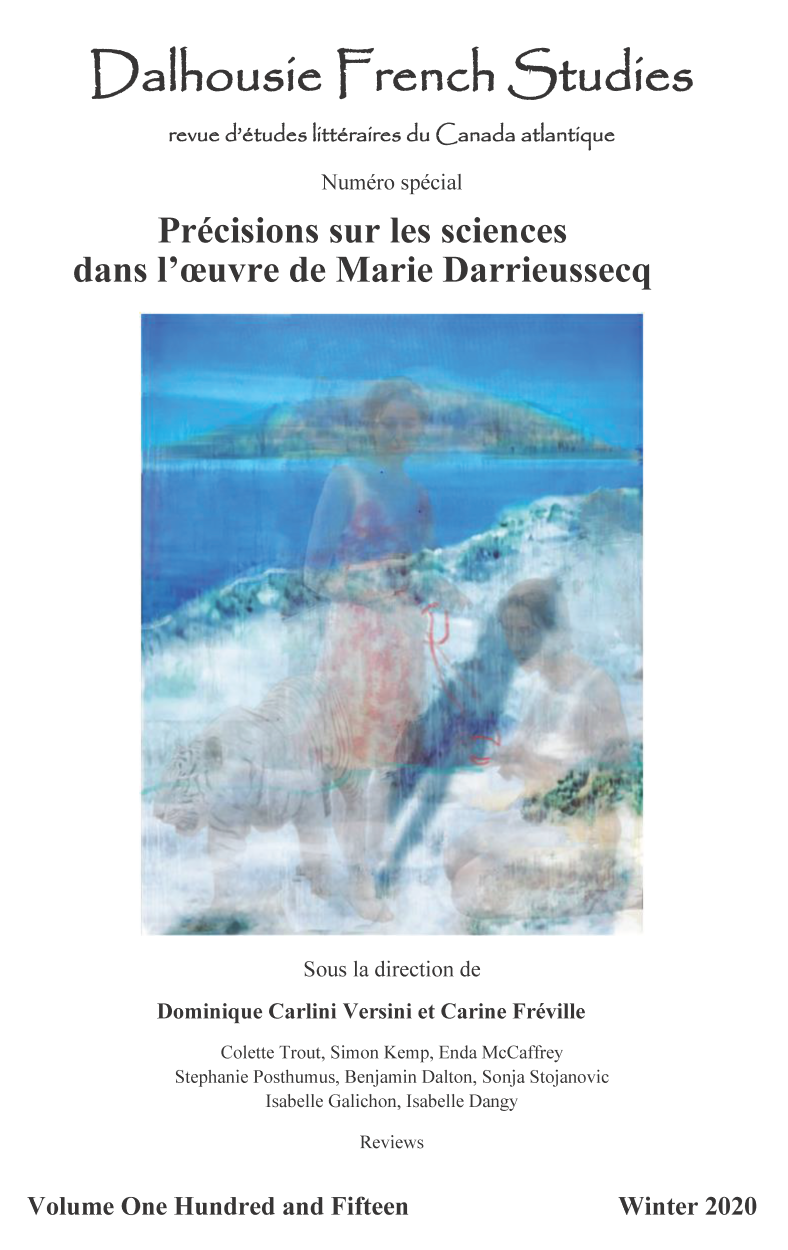The Ecopoetics of Reparation: Energy, Air and Cosmos in Marie Darrieussecq‘s Tom est mort
Résumé
This article establishes that reparation from grief is a process of “working through” trauma in which death is a catalyst for a re-imagination of the human form. “Working through” trauma comes about in different ways in Tom est mort. It manifests itself firstly as a process “outside” Judeo-Christian and socio-cultural signifiers and outside traditional limits of cognition and subjectivity. Darrieussecq views reparation as a process of nonanthropocentric and anthropogenic relationality (with other species and other non-human phenomena) in which new coalitions and affinities offer an alternative post-human ontology founded in the reduction and dissolution of human form into atoms and particles. Secondly, reparation finds an ecopoetic continuity and sustainability in the narrator‘s proximity to and approximation with the physics and spherical production of motion (energy, air, cosmos) and the reparative possibilities posed by this physics to traditional, psychic forms of communication. Darrieussecq‘s vision is the hidden energy that operates in space around us. It is a knowledge of the hidden that comes from an acknowledgement of human redundancy in the face of the planet‘s eco-vitality.
Cet article stipule que la réparation du chagrin est un processus d‘« affrontement » du traumatisme où la mort est le catalyseur d‘une ré-imagination de la forme humaine. « Affronter » le traumatisme survient de différentes manières dans Tom est mort. Cela se manifeste dans un premier temps comme un processus « détaché » des signifiants judéo-chrétiens et socio-culturels ainsi que des limites traditionnelles de la cognition et de la subjectivité. Darrieussecq voit la réparation comme un processus de relationnalité non-anthropocentrique et anthropogène (avec d‘autres espèces et d‘autres phénomènes non-humains) au sein duquel de nouvelles coalitions et affinités offrent une alternative post-humaine fondée sur la réduction et la dissolution de la forme humaine en atomes et particules. Dans un second temps, la réparation trouve une continuité et une durabilité écopoétique dans la proximité et l‘approximation de la narratrice avec la production physique et sphérique du mouvement (énergie, air, cosmos) et dans les possibilités réparatrices proposées par cette physique aux formes de communication traditionnelles et psychiques. La vision de Darrieussecq est l‘énergie cachée qui s‘opère dans l‘espace qui nous entoure. C‘est une connaissance du caché qui vient d‘une reconnaissance du caractère dérisoire de l‘humain face à l‘éco-vitalité de la planète.


